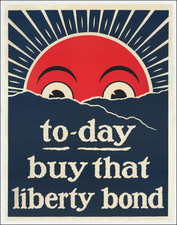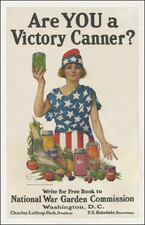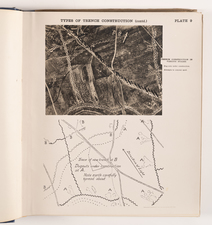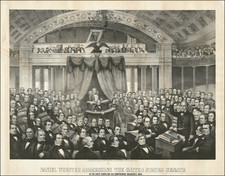Fine example of this World War I-era American propaganda poster, emblazoned with the call "Answer the Red Cross Christmas Roll Call," a clarion to civic duty and humanitarian support during a time of global conflict.
The poster, marked by the distinct use of bold typography and the symbol of the Red Cross against a winter tableau, bespeaks the urgency and the seasonal spirit of giving that characterized the American home front in the war years.
The Red Cross Christmas Roll Call was not merely a call for funds but an invocation to American citizens to enlist in a moral crusade, reminding them that the smallest contributions were magnified in the theatre of war. The symbolic significance of the poster's elements—a solitary snow-covered tree and a cozy homestead set against the stark blue of a winter's night—evoked a sense of security and warmth, starkly contrasting with the harsh realities faced by those in the trenches and on the battlefields. This poignant contrast was designed to galvanize the populace, connecting the peace of the holiday season with the dire needs of the Red Cross mission abroad.
The artistry of the piece, credited to Ray Greenleaf, exemplifies the early 20th-century graphic design, harnessing simplicity for impact. The design operates on a patriotic palette of red, white, and blue, with the Red Cross emblem taking prominence—a visual representation of America's commitment to aid and relief efforts.
It was under the auspices of the Committee on Public Information, specifically its Division of Pictorial Publicity, that such posters played a pivotal role in shaping public opinion and marshaling support for the war effort and humanitarian aid. The Division, tasked with the production of powerful imagery to promote wartime initiatives, harnessed the talents of artists like Greenleaf to create evocative works that appealed not only to the American sense of justice but also to its heartstrings.
The poster's enduring significance lies in its dual role as both an artifact of wartime sentiment and a testament to the power of graphic design in service of public persuasion. As such, it remains a poignant reminder of the era's visual and cultural zeitgeist, as well as the timeless virtues of compassion and generosity in the face of adversity.
Ray Greenleaf studied at the Art Students League in New York City.
He served as the Art Director for Ward & Gow Advertising Company and wa a member of the Society of Illustrators, Art Students League in New York City.
In World War I, he was a camouflage artist and also was a member of the executive committee of the Division of Pictorial Publicity.









![[ First World War) ] The World Cannot Live Half Slave, Half Free -- The Prussian Blot -- 100,000,000 People Already Enslaved By Germany](https://storage.googleapis.com/raremaps/img/small/68731.jpg)
![[WWI British Propaganda Map in Italian] L’impero Britannico in Guerra](https://storage.googleapis.com/raremaps/img/small/86441.jpg)



